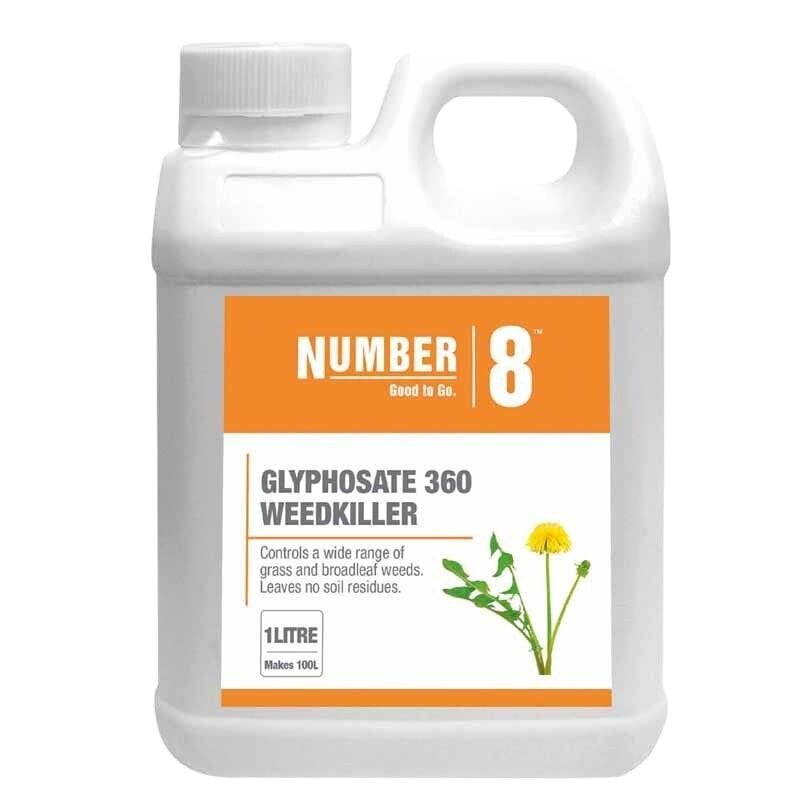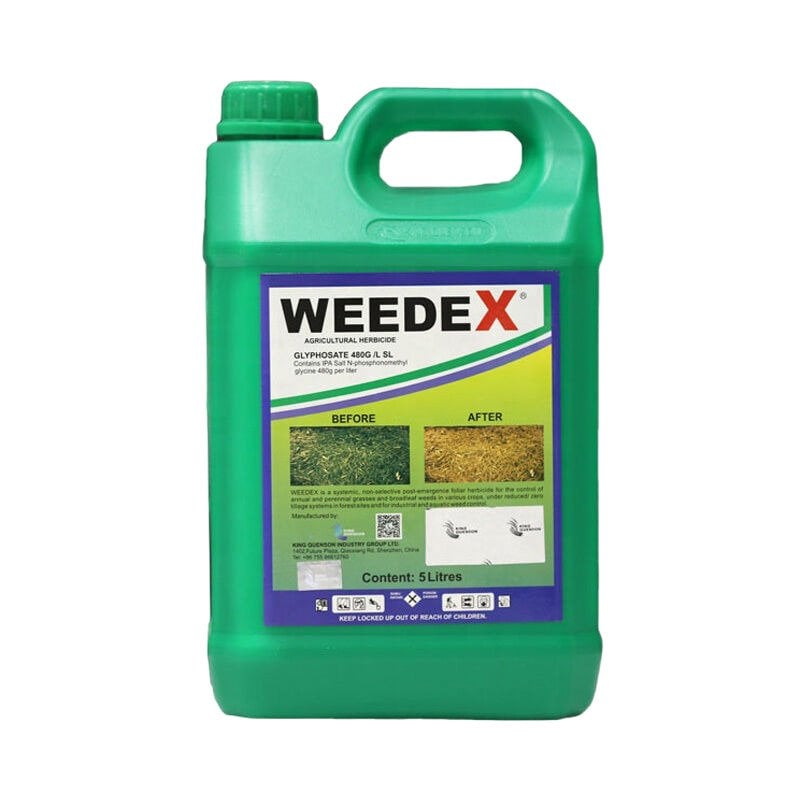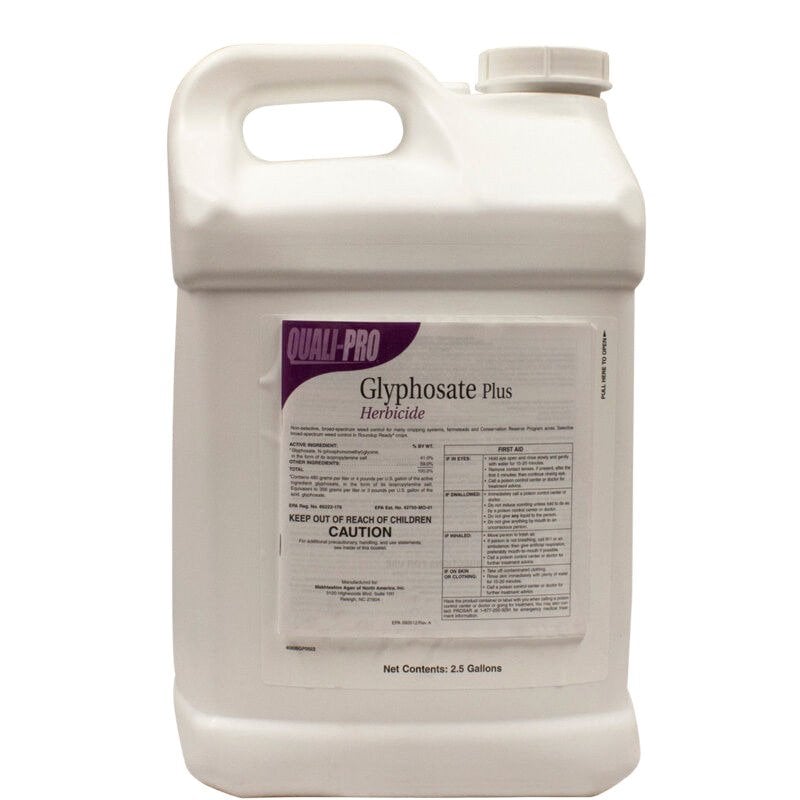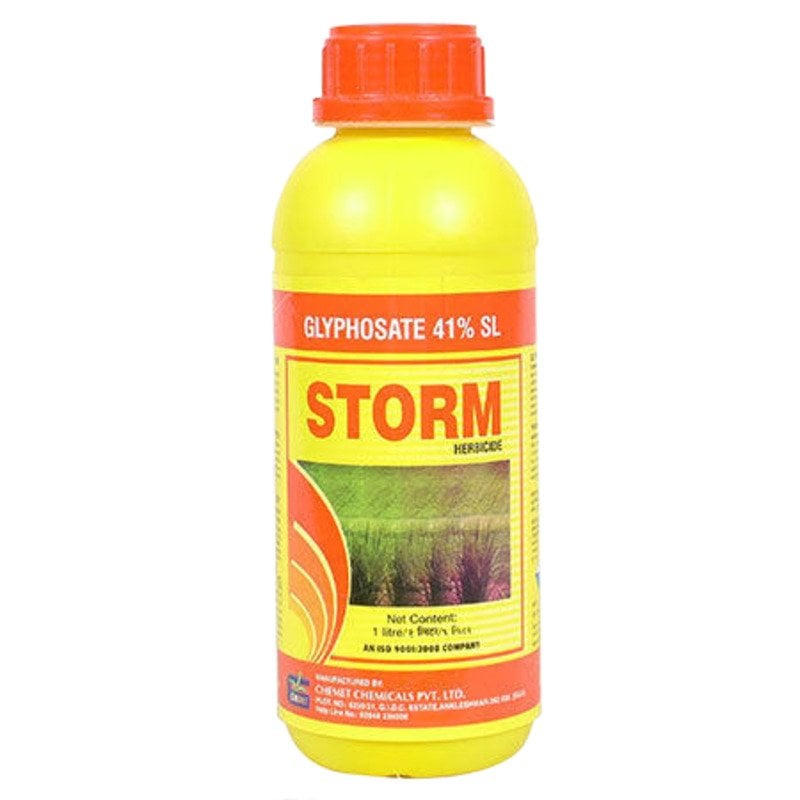How Soon Can You Plant After Using Glyphosate?
Glyphosate is one of the most widely used herbicides for controlling unwanted vegetation in both agricultural and residential settings. However, many gardeners and farmers wonder: How soon can you plant after using glyphosate? This article will explain the recommended waiting periods after applying glyphosate to ensure that it doesn’t interfere with your new plantings, and help you better understand the implications of glyphosate’s residual effects on soil.
Understanding Glyphosate’s Residual Effects
Glyphosate is a systemic herbicide, meaning that once it is absorbed by plants, it is transported throughout the plant system to kill weeds from the inside out. Glyphosate does not typically remain in the soil for long periods, but it can affect soil microbes and the health of plants if used incorrectly or if the waiting period is not observed.
The waiting period or replanting interval is the amount of time recommended between the application of glyphosate and planting new seeds or transplants. The time frame depends on several factors:
- Glyphosate concentration: Different formulations of glyphosate may require different waiting periods.
- Soil conditions: The type of soil (clay, sandy, loamy) can affect how quickly glyphosate breaks down.
- Weather conditions: Hotter, dry weather can speed up glyphosate’s degradation in the soil, while cooler, wet weather may slow it down.
How Long After Spraying Glyphosate Liquid Can You Plant?
The general recommendation for planting after spraying glyphosate is that you should wait at least 7 days. However, this can vary depending on the specific conditions:
- For General Gardening: Most sources suggest waiting around 7 days after applying glyphosate before planting new vegetables, flowers, or grasses. This allows glyphosate to break down in the soil and ensures that it does not affect the growth of your new plants.
- For Agricultural Crops: If you’re planting crops like corn, soybeans, or wheat, the recommended waiting period may be a bit longer. It can range from 7 to 14 days, depending on the crop type, soil conditions, and climate.
- For Specific Plant Types: Some plants are more sensitive to glyphosate than others, and you may need to extend the waiting period. For example, legumes and certain perennials can be especially vulnerable, requiring a longer gap.
- Herbicide Formulations: Products with lower concentrations of glyphosate may break down more quickly, allowing for planting sooner, while higher concentrations or concentrates (e.g., 41% glyphosate) may take longer to break down in the soil, requiring a longer waiting period.
How Long After Glyphosate Solid / Particles Can I Plant?
As a general rule, it is safe to plant new seeds or seedlings after 7 to 14 days of applying glyphosate, but here are a few important points to keep in mind:
- Soil Health: Glyphosate binds to soil particles and may temporarily affect soil health, particularly in soil that is already low in organic matter. This is why it’s important to monitor soil conditions and choose plants that can tolerate some degree of herbicide residue.
- Post-Application Watering: Watering after applying glyphosate helps it break down more quickly. If you’re planting in an area that has recently been treated, it’s important to water well before planting to help dilute any remaining glyphosate residues.
- Consider Crop Type: If you’re planting sensitive crops, such as root vegetables or seedlings, it might be better to wait a full 2 weeks to ensure the herbicide has dissipated sufficiently.
Can You Plant Immediately After Glyphosate?
Planting immediately after applying glyphosate is generally not recommended, as the herbicide is still in the process of being absorbed and broken down by the weeds. If you plant too soon, the chemicals could interfere with seed germination or root development, particularly for sensitive crops or ornamental plants.
- Impact on Germination: If glyphosate is still active in the soil, it can inhibit seed germination, affecting the establishment of newly planted seeds.
- Effect on Transplants: Even if you’re planting transplants, it’s essential to wait until glyphosate has had time to break down, as it can damage roots or cause stunted growth in young plants.
Can You Plant After Glyphosate If It Rained?
Rainfall after applying glyphosate may reduce the herbicide’s effectiveness, as it can wash away some of the chemical from the treated area. However, rain can also help break down glyphosate more quickly, especially if it occurs a few days after application. If it’s rained heavily within the first 24 hours after spraying, it may be a good idea to wait longer before planting.
- Reapply if Needed: If glyphosate was washed off by rain and the target weeds were not fully treated, a second application might be necessary.
- Monitor Soil Conditions: After rainfall, test soil conditions and wait for the soil to dry out before planting, especially if you are working with crops that are more sensitive to herbicide exposure.
Can Glyphosate Be Used Just Before Planting?
Some gardeners and farmers use glyphosate as a pre-planting herbicide to control weeds before sowing new crops. In this case, you would apply glyphosate at least 2 to 3 weeks before planting. This gives glyphosate time to fully break down and ensures that it won’t harm newly planted seeds.
- Ideal for Annuals: Glyphosate is often used as a pre-planting weed control solution for annuals or crops that are planted from seed, like soybeans or corn.
- Soil Health Consideration: Make sure the soil is well-prepared after glyphosate application. Consider testing the soil for pesticide residues before planting, especially in sensitive crops.
Conclusion
Knowing how soon you can plant after using glyphosate is crucial for successful and safe gardening or farming. As a general guideline, it’s best to wait 7 to 14 days before planting new crops, seeds, or plants after glyphosate application. This waiting period allows the herbicide to break down in the soil and ensures that your new plants can grow without interference from residual glyphosate.
- For general gardening: Wait at least 7 days.
- For sensitive crops or longer-lasting herbicides: Wait up to 14 days.
- Always refer to the label instructions for the specific glyphosate product you’re using, as waiting times can vary based on the formulation and soil conditions.
By following these guidelines, you can effectively use glyphosate for weed control while ensuring that your plants thrive after application.
Glyphosate is one of the most widely used herbicides for controlling unwanted vegetation in both agricultural and residential settings. However, many gardeners and farmers wonder: How soon can you plant after using glyphosate? This article will explain the recommended waiting periods after applying glyphosate to ensure that it doesn’t interfere with your new plantings, and help you better understand the implications of glyphosate’s residual effects on soil.
Understanding Glyphosate’s Residual Effects
Glyphosate is a systemic herbicide, meaning that once it is absorbed by plants, it is transported throughout the plant system to kill weeds from the inside out. Glyphosate does not typically remain in the soil for long periods, but it can affect soil microbes and the health of plants if used incorrectly or if the waiting period is not observed.
The waiting period or replanting interval is the amount of time recommended between the application of glyphosate and planting new seeds or transplants. The time frame depends on several factors:
- Glyphosate concentration: Different formulations of glyphosate may require different waiting periods.
- Soil conditions: The type of soil (clay, sandy, loamy) can affect how quickly glyphosate breaks down.
- Weather conditions: Hotter, dry weather can speed up glyphosate’s degradation in the soil, while cooler, wet weather may slow it down.
How Long After Spraying Glyphosate Liquid Can You Plant?
The general recommendation for planting after spraying glyphosate is that you should wait at least 7 days. However, this can vary depending on the specific conditions:
- For General Gardening: Most sources suggest waiting around 7 days after applying glyphosate before planting new vegetables, flowers, or grasses. This allows glyphosate to break down in the soil and ensures that it does not affect the growth of your new plants.
- For Agricultural Crops: If you’re planting crops like corn, soybeans, or wheat, the recommended waiting period may be a bit longer. It can range from 7 to 14 days, depending on the crop type, soil conditions, and climate.
- For Specific Plant Types: Some plants are more sensitive to glyphosate than others, and you may need to extend the waiting period. For example, legumes and certain perennials can be especially vulnerable, requiring a longer gap.
- Herbicide Formulations: Products with lower concentrations of glyphosate may break down more quickly, allowing for planting sooner, while higher concentrations or concentrates (e.g., 41% glyphosate) may take longer to break down in the soil, requiring a longer waiting period.
How Long After Glyphosate Solid / Particles Can I Plant?
As a general rule, it is safe to plant new seeds or seedlings after 7 to 14 days of applying glyphosate, but here are a few important points to keep in mind:
- Soil Health: Glyphosate binds to soil particles and may temporarily affect soil health, particularly in soil that is already low in organic matter. This is why it’s important to monitor soil conditions and choose plants that can tolerate some degree of herbicide residue.
- Post-Application Watering: Watering after applying glyphosate helps it break down more quickly. If you’re planting in an area that has recently been treated, it’s important to water well before planting to help dilute any remaining glyphosate residues.
- Consider Crop Type: If you’re planting sensitive crops, such as root vegetables or seedlings, it might be better to wait a full 2 weeks to ensure the herbicide has dissipated sufficiently.
Can You Plant Immediately After Glyphosate?
Planting immediately after applying glyphosate is generally not recommended, as the herbicide is still in the process of being absorbed and broken down by the weeds. If you plant too soon, the chemicals could interfere with seed germination or root development, particularly for sensitive crops or ornamental plants.
- Impact on Germination: If glyphosate is still active in the soil, it can inhibit seed germination, affecting the establishment of newly planted seeds.
- Effect on Transplants: Even if you’re planting transplants, it’s essential to wait until glyphosate has had time to break down, as it can damage roots or cause stunted growth in young plants.
Can You Plant After Glyphosate If It Rained?
Rainfall after applying glyphosate may reduce the herbicide’s effectiveness, as it can wash away some of the chemical from the treated area. However, rain can also help break down glyphosate more quickly, especially if it occurs a few days after application. If it’s rained heavily within the first 24 hours after spraying, it may be a good idea to wait longer before planting.
- Reapply if Needed: If glyphosate was washed off by rain and the target weeds were not fully treated, a second application might be necessary.
- Monitor Soil Conditions: After rainfall, test soil conditions and wait for the soil to dry out before planting, especially if you are working with crops that are more sensitive to herbicide exposure.
Can Glyphosate Be Used Just Before Planting?
Some gardeners and farmers use glyphosate as a pre-planting herbicide to control weeds before sowing new crops. In this case, you would apply glyphosate at least 2 to 3 weeks before planting. This gives glyphosate time to fully break down and ensures that it won’t harm newly planted seeds.
- Ideal for Annuals: Glyphosate is often used as a pre-planting weed control solution for annuals or crops that are planted from seed, like soybeans or corn.
- Soil Health Consideration: Make sure the soil is well-prepared after glyphosate application. Consider testing the soil for pesticide residues before planting, especially in sensitive crops.
Conclusion
Knowing how soon you can plant after using glyphosate is crucial for successful and safe gardening or farming. As a general guideline, it’s best to wait 7 to 14 days before planting new crops, seeds, or plants after glyphosate application. This waiting period allows the herbicide to break down in the soil and ensures that your new plants can grow without interference from residual glyphosate.
- For general gardening: Wait at least 7 days.
- For sensitive crops or longer-lasting herbicides: Wait up to 14 days.
- Always refer to the label instructions for the specific glyphosate product you’re using, as waiting times can vary based on the formulation and soil conditions.
By following these guidelines, you can effectively use glyphosate for weed control while ensuring that your plants thrive after application.






